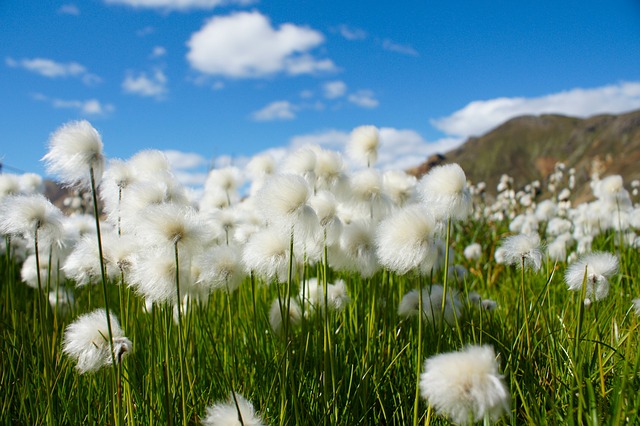For many millennia, cotton has been needed in many cultures for the production of clothing. The oldest historical evidence of this comes from India, where cotton was already used in 6000 BC. was one of the most important raw materials. Likewise, cotton already had a very special significance in ancient Egypt and in the advanced civilizations of Central America.
Even today, cotton is considered the most popular natural fiber in the world. Market analyses show that the market share among natural fibers is around 75 percent. Cotton is therefore also interesting for investors.
Versatile use
Cotton is still mainly needed in the textile and clothing industry. Cotton fibers are present in numerous fabrics such as denim, corduroy, but also velvet or satin. In addition, cotton is also used for the production of book bindings, coffee filters, fishing nets and many other products.
Cotton contains the chemical substance gossypol. This is inedible for humans and most animals. Nevertheless, cotton is also used in animal feed production as an additive in feed for ruminants. In addition, the oil contained in the seeds is used for the production of various cosmetics such as soaps.
Cotton cultivation not so easy
Cotton requires high soil moisture with a high air temperature, plenty of sun and only moderate rainfall to thrive. Today, most cotton crops are located outside the ideal climatic zones. Therefore, cotton cultivation is quite intensive. The plants require artificial watering and are susceptible to pests.
Bt cotton was therefore introduced in the 1990s. This is a genetically modified cotton variety that is resistant to certain pests.
Main producing countries and factors influencing the price of cotton
The world’s largest cotton producing countries are currently the USA and China. China in particular has been trying to accumulate large cotton reserves in recent years. Just as with all other commodities, global reserves are key factors in determining the price of cotton, as is demand. Due to the general increase in prosperity, the demand for cotton has risen steadily in recent years.
But climate change and possible climate catastrophes naturally also have an impact on the prices of the natural substance. In addition, oil prices also play a major role in the price of cotton, because oil prices have a strong impact not only on transportation costs, but also on production costs. The entire cultivation and harvesting process is fully mechanized in cotton, so fuel prices have a major impact.
How to invest in cotton
Investors have several options to invest in cotton. Cotton futures are traded on the American NYMEX. Over it can be invested in CFDs or ETFs.
Cotton not only brings variety to the portfolio, but will continue to show stable performance even in crisis situations.







